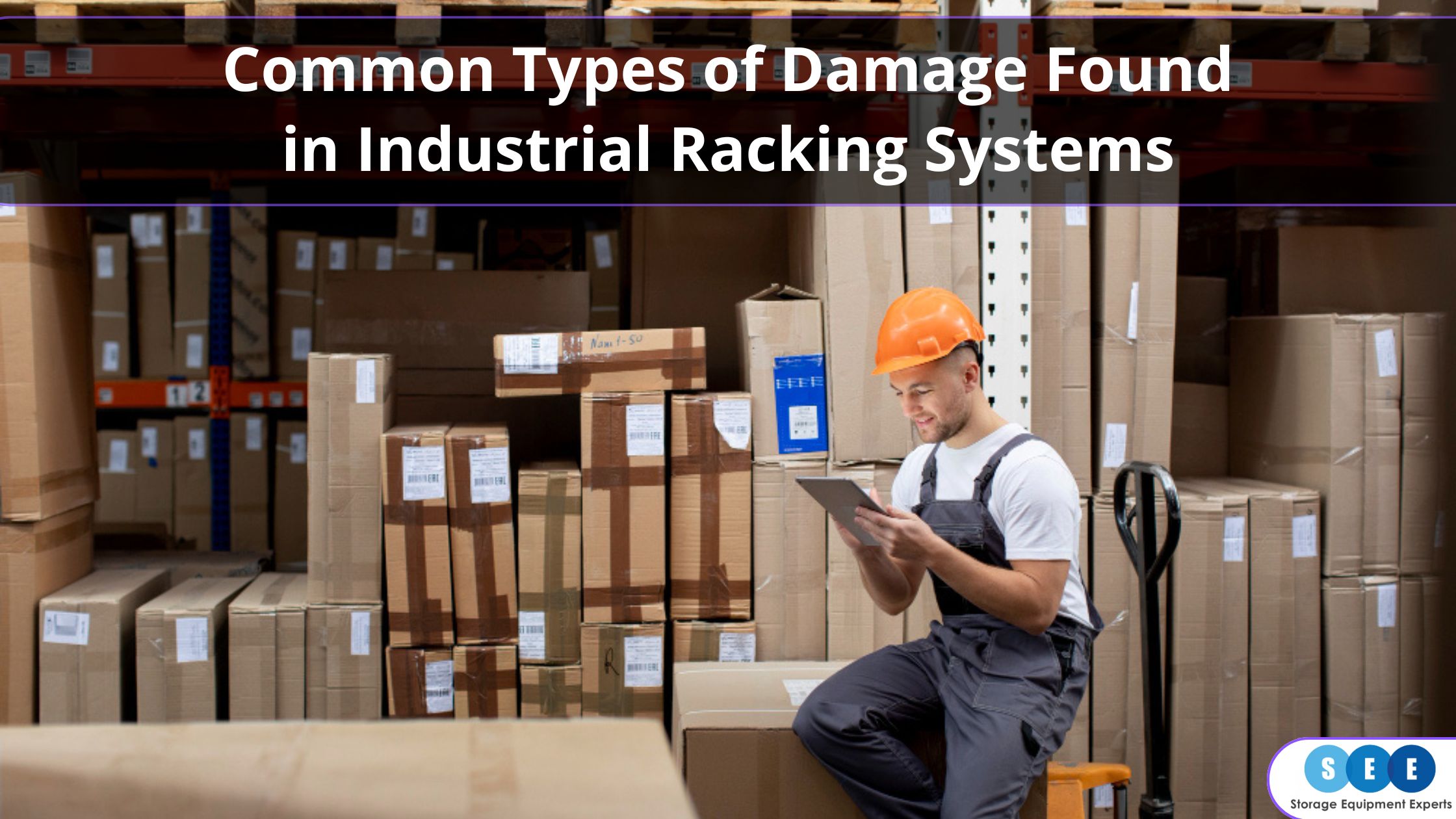
Despite their robust design, industrial racking systems that we rely on for efficient and smooth warehouse operations can suffer from various types of damage, posing risks to safety and efficiency.
In this article, we’ll take a look at some of the more common forms of damage that can affect industrial racking and offer advice and guidance on prevention and maintenance to ensure their longevity.
Structural Damage to Racking Systems
Structural damage is perhaps the most severe form of harm that can occur to industrial racking systems. This type of damage can happen when the racking is subjected to impacts from forklifts, improper installation, or overloading.
When structural components like beams or uprights are compromised, it can lead to overall system instability and, in severe cases, collapse.
Forklifts are one of the more common causes of structural damage. A lapse in concentration or misjudgment in distance or speed can lead to collisions with racking components, causing bends, cracks, or other deformities. Overloading is another frequent culprit – this happens when operators place too much weight on the racking, which then causes stress on the structure, leading to warping or failure.
To mitigate structural damage, regular inspections and strict adherence to load capacities are essential. Early detection of bends or cracks will give you the opportunity to make fixes or replacements, ultimately preventing more significant issues down the road.
Corrosion and Rust
Corrosion and rust are also threats to the longevity of your industrial pallet racking systems. These problems arise when metal components are exposed to moisture, chemicals, or other corrosive elements. Rust weakens the metal, causing it to lose its structural integrity and eventually leading to failure.
Factors that contribute to corrosion include high humidity, water leaks, or exposure to harsh chemicals. When rust takes hold, it can spread quickly, compromising the entire racking system. Regular inspections can help identify early signs of corrosion, allowing for prompt treatment and prevention measures.
Keeping the warehouse environment dry and well-ventilated can also reduce the risk of rust formation. If chemicals are involved in warehouse operations, ensure they are stored safely to avoid accidental contact with industrial racking systems.
Load Capacity and Overloading Issues
Overloading occurs when the weight placed on the racking exceeds its designed limits, leading to excessive stress on the beams and uprights. This can result in bending, buckling, or, in extreme cases, racking collapse. Industrial pallet racking systems are designed and manufactured with very high load capacities in mind – but they do still have limits, and these need to be respected.
Overloading often stems from a lack of awareness or disregard for weight limits. It can also happen when goods are unevenly distributed across the industrial racking, causing localized stress points. To prevent overloading, you should clearly mark load capacities on the racking and ensure all warehouse staff are aware of these limits.
Best practices for load management include evenly distributing weight across the shelves and avoiding stacking goods higher than the recommended limit. Regular training for warehouse employees on proper load handling can significantly reduce the risk of overloading and subsequent damage.
Wear and Tear from Daily Use
Daily operations will inevitably take a toll on racking systems, leading to wear and tear. This type of damage is typically less severe but can accumulate over time, affecting the system’s overall performance. Common signs of wear and tear include scratches, abrasions, and minor dents.
Routine handling, especially in high-traffic areas, contributes to this wear – although it might seem minor, these small issues can worsen if left unaddressed. Regular inspections and maintenance can help identify and rectify wear and tear early, maximising the racking system’s long-term durability.
Improper Installation and Assembly
Incorrect installation and assembly are often overlooked but can lead to significant problems. If racking is not installed correctly, it can result in misalignment, unsecured anchoring, or uneven support, increasing the risk of failure and collapse.
Common installation errors include neglecting to secure racking to the floor or improperly aligning beams or forgetting to install levelling plates or beam safety locks or other safety components. These issues will lead to instability, particularly under heavy loads. Following the manufacturer’s guidelines during installation and employing professional installers should prevent these problems.
Improper assembly can also occur during repairs or reconfigurations. Ensuring that any changes are made by qualified personnel (such as SEIRS Approved Installers) is key for maintaining the system’s integrity and safety.
Damage from Environmental Factors
Environmental factors can have a substantial impact on racking systems. Temperature fluctuations, high humidity, and exposure to chemicals can all contribute to damage, as metal components are particularly susceptible to these environmental changes, leading to warping, rust, or other forms of degradation.
To protect against environmental damage, it’s important to maintain a stable warehouse climate. This can be achieved through proper ventilation and climate control systems. If chemicals are part of the warehouse operations, ensure they are stored and handled in a way that minimizes risk to racking systems.
Conclusion
Damage to industrial racking systems poses significant risks to warehouse operations, as well as the overall health and safety of your personnel. Regular inspections, proper training, and proactive maintenance are key to preventing and addressing structural issues and environmental factors – by taking a comprehensive approach to identifying and mitigating damage, warehouse operators can ensure the safety and longevity of their racking systems.
You can reach out to the team at SEE Racking Inspections to discuss your racking safety: remember – a proactive approach to racking system maintenance is crucial for maintaining a safe and efficient warehouse environment.





